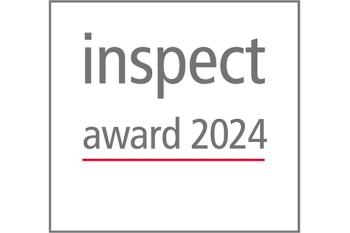3D-Topography and Visual Impression Concisely Recorded
New Surface Evaluation System
A new optical system measures important surface parameters like topography, roughness, structure and graining as well as the visual impression of surfaces at the same time. The mobile system works reproducible and includes storage, documentation and analysis of the measured data.
Consumers get more and more critical, the trend to provide good looking surfaces with complex micro and macro structures continues. The structural values of the surfaces are reflected in roughness, graining, texture, waviness, porosity, fibrousness and give surfaces an additional optical and functional value. People recognize this value and transfer it to a visual-optical overall impression and thus, the surface is characterized regarding its quality appeal and value.
Fast and Reproducible
Color and material impressions are dominated by the surface topography and its visual impression. The evaluation of the surface texture is of particular importance with regard to functionality, e.g. the avoidance of reflections in the automotive interior and of the tactile surface properties like haptics, grip or softness. As a result, surface evaluation systems, have to record the micro and macro topography - such as roughness, graining, texture and structural values in a highly resolved, fast and three-dimensional way. Moreover, they have to provide them with individual numerical values and at the same time record and document the visual impression to the human eye. Crucial for such a surface evaluation strategy or such a system is its reproducibility, fastness and mobility.
The new Traceit measuring system of Innowep meets all these requirements.
It works according to a patented kind of "shape by shading" principle. Several illuminations at different angles to each other are emitting light. The illuminations are located around a sensor head. In another step the visual impression of exactly the same area is taken by the same sensor and analyzed in respect to the light intensity distribution.
Due to the fact that the complete surface is recorded at once, the system is much faster than conventional line scanners. After a maximum of one minute, the topography of the standard measuring area of 5 x 5 mm is recorded, evaluated and displayed in a resolution up to 1.5 µm. The measuring head is directly connected to a modified notebook.
The Traceit system operates also without external power supply and can be used in this way as a fully mobile unit.
The measuring system records 3D topography values as well as the visual impression at the same time in a reliable fashion. The topography values and the visual impression are not only documented but are also transformed by an analysis tool into various roughness, structural and graining indices, light intensity distribution, always including standard deviations. This is done in the x and y direction separately. As a result, dependencies on a preferred direction - caused for example by production - can be recognized and examined. The area evaluation is carried out on a maximum "evaluation length" of 15 m, 7.5 m in the x- and 7.5 m in the y-direction. This is also valid for the visual impression which is transferred into "visual roughness" indices and thus allows a direct comparability with other samples. Moreover, it is possible to draw a freely definable line c in the measuring area which allows a valuation of local topography and local visual light intensity distribution.
Besides the evaluation of the surface based on different roughnesses; a mode for particle analysis is available. With the vertical sections of this mode, the topographies can be examined regarding particle or pore distribution, percentage contact area or structure. This is very useful for the examination of the contact area with the help of other materials or the human hand and for the determination of the proportion of structure valleys in which dirt may accumulate. This tool is also very useful for monitoring, damage documentation and analysis at a surface, due to chemical wash off or mechanical abrasion.
The system displays the total area of the particles as absolute value and as proportion of the total area as well as the average particle size.
Mobile Use on the Spot
The mobility of the Traceit system enables the use on the finished product, e.g. in the interior of an automobile or quality assurance measurements directly at the production line. The application of the system ranges from coordination between designers, developers and quality engineers. The fast and non-destructive verifiability of the surface parameters and the visual impression help to identify problems and help to proof that these problems were corrected.
The Traceit system consists of a handy mobile sensor which is connected to a notebook. By means of special measuring, evaluation and analysis modules, the visualization and evaluation of the surface takes place via the notebook. If a light-transmitting table is used, it is possible to investigate transparent or translucent materials like glass, foils, fabrics or paper. Therefore, besides other functions, the system is able to measure and evaluate material density distribution as cloudiness, i.e. the lignin distribution in paper or parchment.
The importance of the visual surface is well-known to designers and manufacturers. But up to now it was only insufficiently possible to measure and evaluate the impact of micro and macro topography indices as well as the visual impression simultaneously, fast and mobile. The newly developed Traceit system helps here.
Contact
Innowep GmbH
Haugerring 6
97070 Würzburg
Germany
+49 931 32298-0
+49 931 32298-12








